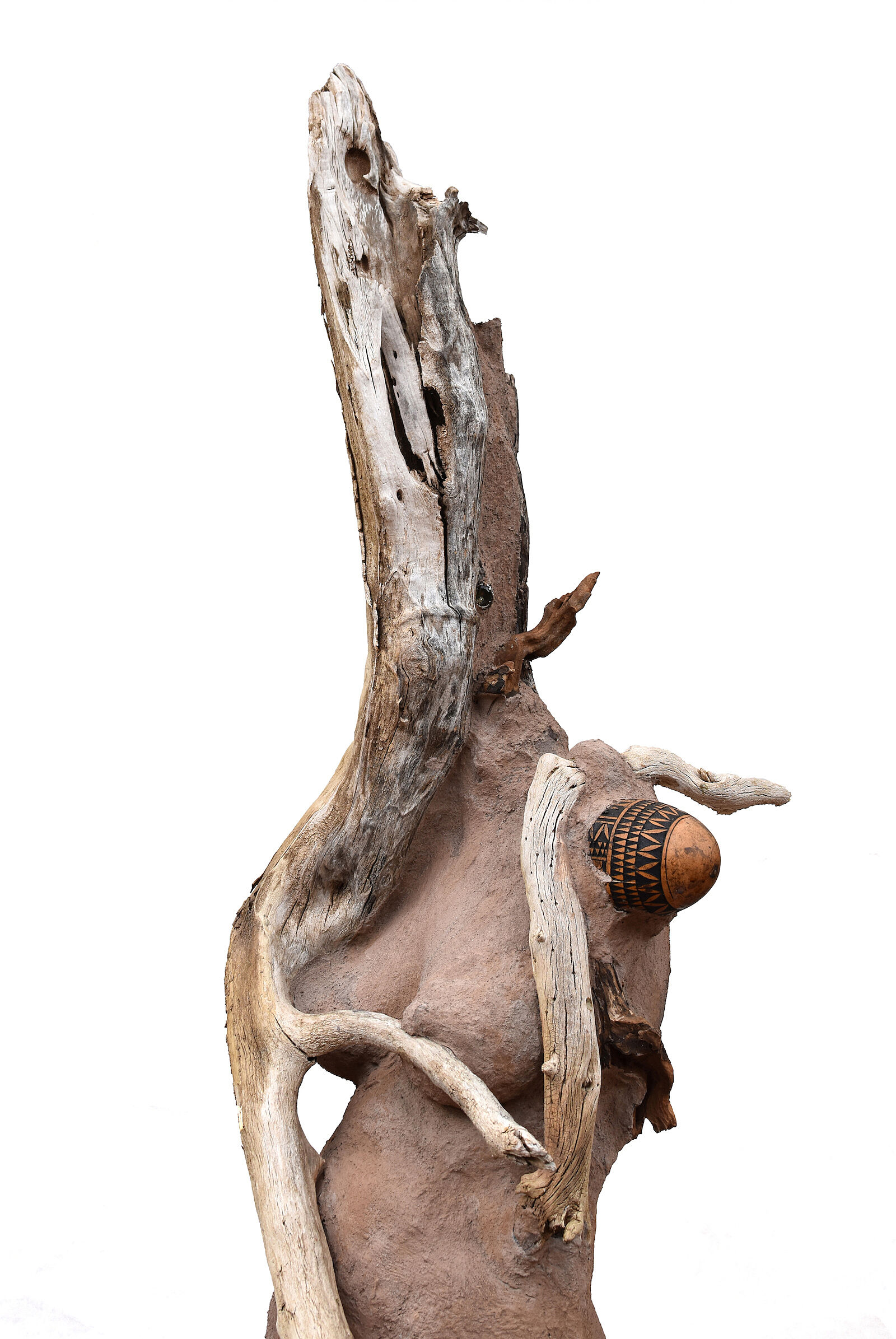Whitney Biennial 2019 | Art & Artists
May 17–Oct 27, 2019
Whitney Biennial 2019 | Art & Artists
Wangechi Mutu
58
Floor 6
Born 1972 in Nairobi, Kenya
Lives in Brooklyn, NY, and Nairobi, Kenya
In Wangechi Mutu’s Sentinels, natural and manufactured materials merge with and emerge from one another, coalescing into larger-than-life earthy, android female forms. The sculptures’ creation was made possible by the artist’s movement between both her studios in Nairobi and New York, which brought both new perspectives and new materials. In these works, Mutu radicalizes clichéd associations of nature as an eternally forgiving female-mother, and expresses a deep sense of humankind’s complex, equal and non-negotiable coexistence with one another and all organisms. The Sentinels stand as harbingers of the acute imperative to improve our relationship with each other and our planet or to accept that environmental destruction will inevitably decide our fate for us.
In the kinetic sculpture Poems by my great grandmother I., the “poem” emerges from the sound of a pencil writing circles on the surface of a large aluminum pot; for Mutu, it evokes oral histories and other forms of connection between generations, which are distorted and disrupted when a culture experiences a period of colonialism.
Sentinel I, 2018
-
0:00
Wangechi Mutu, Sentinels
0:00
Wangechi Mutu: I work with fiberglass mannequin parts. And the amazing thing about the fashion mannequins is that they don't stand on their own.
Narrator: Wangechi Mutu.
Wangechi Mutu: As I built them I realized how sturdy and strong they looked, and their legs were so muscular, but obviously in this completely abstract non-human way, because they've got all these branches and roots in them. And they just felt so sturdy. They had such integrity, and stillness. And I decided that they were like guards.
Narrator: Mutu, who was born in Kenya and spent much of her life in New York, now also has a studio in Nairobi. She made these sculptures there, and many of the materials are from Kenya.
Wangechi Mutu: Some of them are traditional objects, pots and implements made by traditional artisans and artists. And in some cases, they have bits and pieces of animals. And there's kind of an archeological feeling about not just what I think what they look like, but making them. Because I think that's really where it comes from for me is, as I'm building them, I'm also unearthing layers inside of myself, about my home, about the land.
And I think all of that is this . . . long exercise that I've been going through over the years, of really trying to return a sense of wholeness to something that was broken. Either my history, or my journey from home, or even just call it post-colonized cultural world that I have inherited and inhabit.
-
0:00
Wangechi Mutu, Poems by my Great-Grandmother
0:00
Narrator: One of the three sculptures by Wangechi Mutu in the 2019 Biennial is abstract. Wangechi Mutu.
Wangechi Mutu: It's called Poems by my Great-Grandmother, and it's a kinetic piece.
Narrator: The work began with some roots that a neighbor gave to the artist. Mutu has attached a pencil to that root.
Wangechi Mutu: And this pencil draws a circle on a big, big, big aluminum pot, or aluminium pot as we say in British English. And that circle for me is this mysterious poem that I will never understand. But it's got the most beautiful sound, and it's quite a mesmerizing activity to watch. And so, I wanted to tie in the idea of art as kind of oral literature, and art from a traditional space as being completely different kind of form.
And also being something that is hard to capture . . . A lot of the culture actually has disappeared with older people who have died, or have been killed, or who have not survived modernity. So one of the things about being in a colonized space is coming to terms with the alienation you feel from not having a connection to the past. And that bridge that I'm always trying to create is sort of this ghost bridge to a place I don't actually know, because I never met my great-grandmother.

